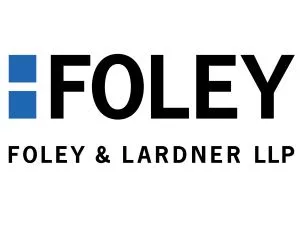In MeadWestVaco Corp. v. Rexam Beauty and Closures, Inc., the Federal Circuit upheld the admissibility of expert testimony that was not fully aligned with the district court's claim construction. In so doing, the court explained that deviations from the claim construction might impact the infringement determination, but did not render the evidence irrelevant as a matter of law.
The Patents at Issue
The patents at issues were MeadWestVaco's U.S. Patent 7,718,132 and U.S. Patent 7,722,819, directed to "'invisible' dip tube[s] for perfumes that appear[] to disappear when immersed in liquid, enhancing the aesthetic appearance of the perfume bottle." The court cited claim 15 of the '132 patent as representative of the generic claims:
15. A dispenser assembly for
dispensing a liquid comprising:
a transport assembly; and,
a tube connected to the transport assembly;
wherein the tube consists essentially of an extruded and quenched
crystalline fluoro-polymer having an XRD crystallinity
not greater than about 13%, the tube has a
transparency of about 80% or more, and the tube has a refractive
index of from about 1.36 to about 1.38.
The Evidentiary Issue
The evidentiary issue focused on the XRD crystallinity parameter recited in the claims. As explained by the Federal Circuit:
XRD testing is one method of measuring the crystalline content of a material. An XRD test is conducted by striking a sample of the material with a monochromatic X-ray beam and examining the pattern of X-rays formed on a detection surface as the X-rays are scattered by the electrons of the atoms within the sample. ....
The parties stipulated to construing the XRD terms as "crystallinity as measured by x-ray diffraction (XRD) using at least the XRD characterization parameters identified in the '132 patent." However, the parties also agreed that those parameters do not fully describe all details of an XRD test, such as the "sample-to-detector distance" or "software for the analysis of the XRD data and the calculation of the XRD crystallinity."
Not surprisingly, the parties "engaged in a battle of the experts" on this issue. As noted by the court, "Rexam's expert, Dr. Ortega, placed his samples 15 cm away from the XRD detector and used the TOPAS software to analyze his results," while "MWV's expert, Dr. Reibenspies, placed his samples 5 cm away from the XRD detector and used the GADDS Full Method software to analyze his results."
The district court found infringement based on MVW's expert's testimony. In its appeal, "Rexam argued that the district court erred in allowing testimony from MWV's expert, Dr. Reibenspies, because he did not follow all of the testing parameters set forth in the '132 patent," and erred in finding infringement based on Dr. Reibenspies's testimony."
The Federal Circuit Decision
The Federal Circuit opinion was authored by Judge Prost and joined by Judges O'Malley and Taranto.
The Federal Circuit applies regional law to evidentiary issues. Here, it found that Rexam's arguments regarding MVW's expert testimony might undermine MVW's infringement case, but did not render the testimony inadmissible.
Dr. Reibenspies opined that using his testing parameters, which differed slightly from the claim construction, he was able to conclude that the V1 and V2 tubes infringed the '132 patent when applying the court's construction. Dr. Reibenspies's deviations from the claim construction, discussed in more detail below, gave Rexam an opportunity to cast doubt upon his infringement conclusions, which Rexam did through cross-examination and opposing expert testimony. But it did not make Dr. Reibenspies's testimony legally irrelevant. .... Because Rexam failed to show that the district court abused its discretion in allowing Dr. Reibenspies to testify, we affirm the court's denial of Rexam's motion to exclude.
The Federal Circuit explained further:
The court found that Dr. Reibenspies did not use the 0.3 mm slit, Goebel mirror or oscillator as required by the claim construction. .... At trial, Rexam cross-examined Dr. Reibenspies on each of differences between his test protocol and the claims. The testimony revealed that Dr. Reibenspies used alternate equipment to mimic the results achieved by claim parameters. For example, the combination of the 0.3 mm slit and Goebel mirror produce parallel X-ray beams 0.3 mm apart. Dr. Reibenspies used a graphite monochromator with a fixed slit to produce the same X-ray arrangement. .... The court found that Dr. Reibenspies's testing "deviations were insignificant and could not have substantially affected the test results."
The Federal Circuit noted that MWV's failure to quantify the impact of the testing differences did not render the testimony legally irrelevant, because "MWV did present testimony that Dr. Reibenspies's protocol 'would have had only a minor effect on the test results.'" The district court "credited [that] testimony as 'reasonable,'" and the Federal Circuit found no "clear error" in that determination.
Thus, the Federal Circuit upheld the finding of infringement.
The Evidence Should Fit the Claims
Although the Federal Circuit found no error in the district court's reliance on MWV's expert testimony, it was important that MVW was able to explain how the evidence fit the claims as construed by the district court. As in this case, claimed characteristics that must be determined experimentally usually are construed in accordance with the experimental protocols and test parameters described in the application and/or used any working examples. Applicants may want to ensure that their disclosures provide all of the information necessary to carry out such testing, and be prepared to establish infringement in accordance with those protocols.
The content of this article is intended to provide a general guide to the subject matter. Specialist advice should be sought about your specific circumstances.


